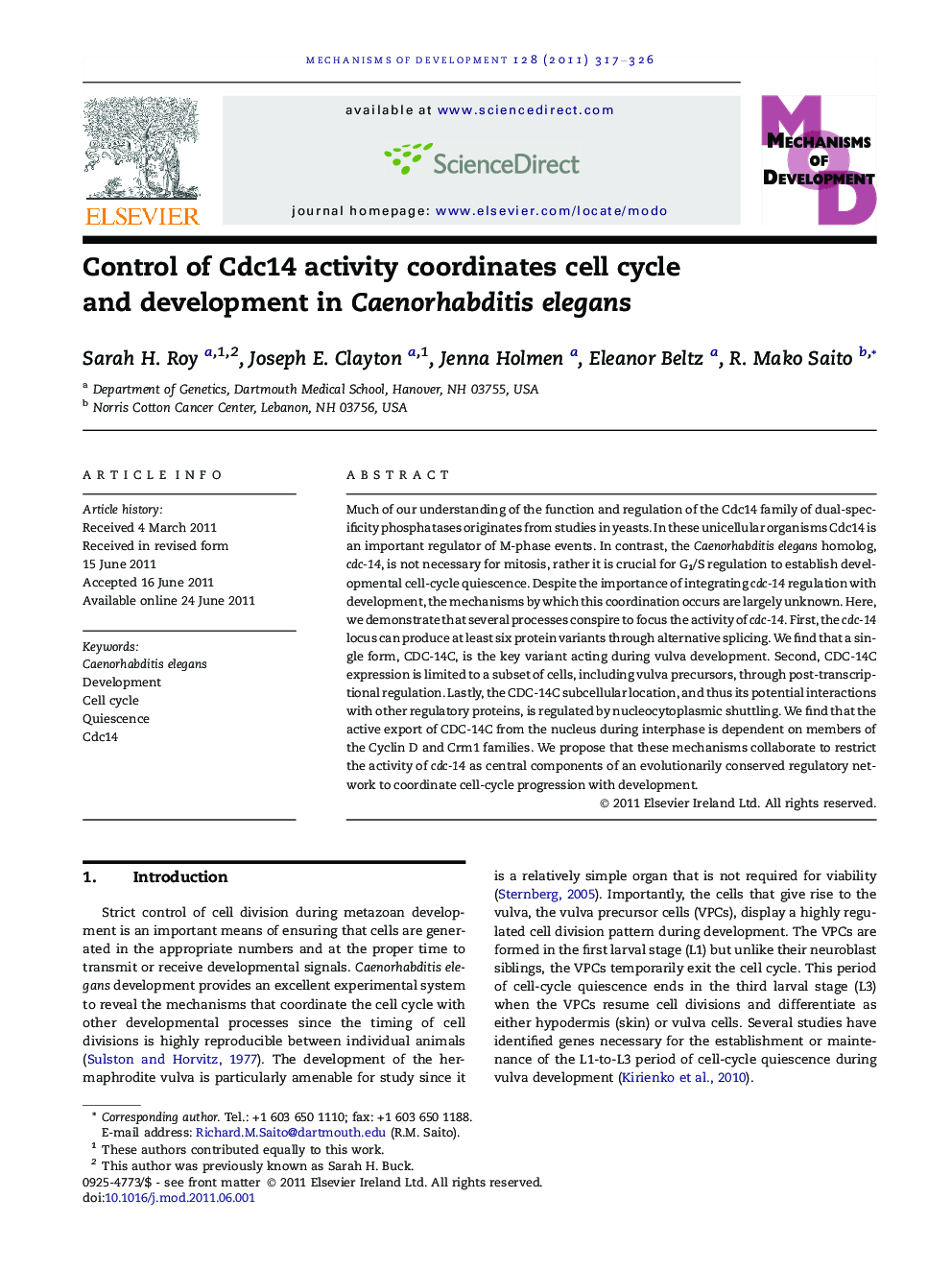| Article ID | Journal | Published Year | Pages | File Type |
|---|---|---|---|---|
| 2194662 | Mechanisms of Development | 2011 | 10 Pages |
Much of our understanding of the function and regulation of the Cdc14 family of dual-specificity phosphatases originates from studies in yeasts. In these unicellular organisms Cdc14 is an important regulator of M-phase events. In contrast, the Caenorhabditis elegans homolog, cdc-14, is not necessary for mitosis, rather it is crucial for G1/S regulation to establish developmental cell-cycle quiescence. Despite the importance of integrating cdc-14 regulation with development, the mechanisms by which this coordination occurs are largely unknown. Here, we demonstrate that several processes conspire to focus the activity of cdc-14. First, the cdc-14 locus can produce at least six protein variants through alternative splicing. We find that a single form, CDC-14C, is the key variant acting during vulva development. Second, CDC-14C expression is limited to a subset of cells, including vulva precursors, through post-transcriptional regulation. Lastly, the CDC-14C subcellular location, and thus its potential interactions with other regulatory proteins, is regulated by nucleocytoplasmic shuttling. We find that the active export of CDC-14C from the nucleus during interphase is dependent on members of the Cyclin D and Crm1 families. We propose that these mechanisms collaborate to restrict the activity of cdc-14 as central components of an evolutionarily conserved regulatory network to coordinate cell-cycle progression with development.
► The Caenorhabditis elegans Cdc14 phosphatase homolog, cdc-14, regulates G1/S progression. ► CDC-14C is the primary alternative splice form controlling cell-cycle quiescence. ► Tissue-specific CDC-14C expression is directed by post-transcriptional regulation. ► CDC-14C subcellular location is regulated by nucleocytoplasmic shuttling. ► Nuclear export of CDC-14C depends on members of the Cyclin D and Crm1 families.
